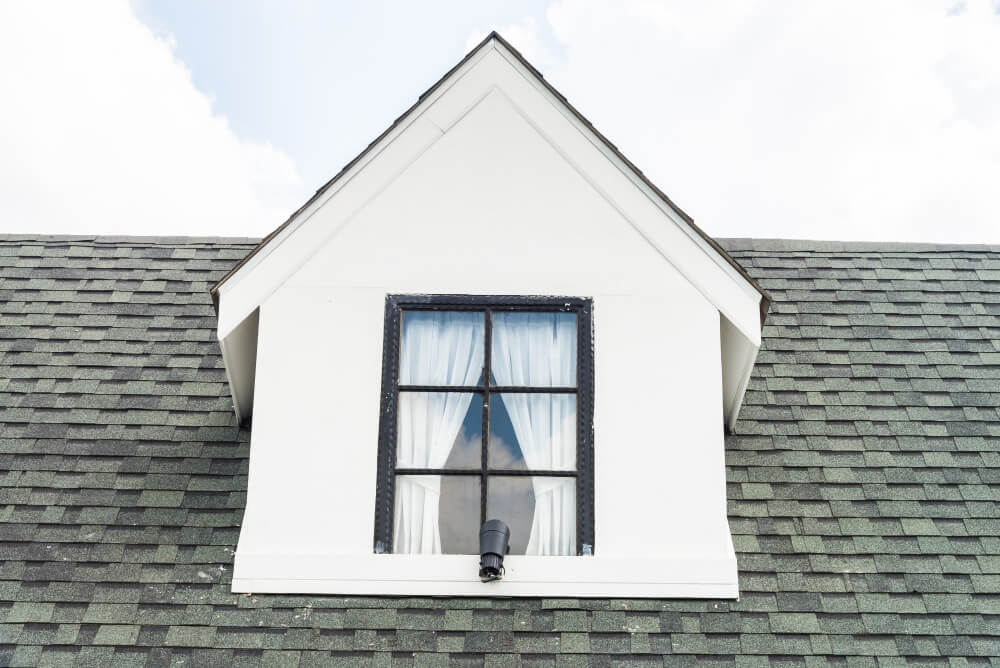Mansard windows are an interesting feature in architecture, often associated with the elegant and distinct Mansard roof. These windows aren’t just functional; they’re a crucial design element that can define the style of a building. Understanding the various architectural elements like mansard windows is essential in design because they contribute to both the aesthetic appeal and the functionality of a structure. In this section, we’ll explore what mansard windows are and why they matter in architectural design.
What is Mansard Window?
A Mansard window is a type of window that is commonly found in Mansard roofs, which are characterized by their double-sloped design. These windows are typically located on the lower slope of the roof and are often used to provide natural light and ventilation to the attic space.
Mansard windows are known for their unique design, which features a curved shape that follows the contour of the roof. This design allows for maximum natural light to enter the attic space, making it a popular choice for homeowners looking to brighten up their living areas.
One of the key benefits of Mansard windows is their versatility. They can be customized to fit a variety of architectural styles and can be made from a range of materials, including wood, vinyl, and aluminum. This flexibility makes them a popular choice for homeowners and architects alike.
In addition to their aesthetic appeal, Mansard windows also offer practical benefits. They are designed to be energy-efficient, helping to reduce heating and cooling costs in the home. Their unique shape also allows for better airflow and ventilation, creating a more comfortable living environment.
Overall, Mansard windows are a popular choice for homeowners looking to add a touch of elegance and sophistication to their homes. Whether used in a traditional or modern setting, these windows are sure to make a statement and enhance the overall look and feel of any property.
2. Definition of Mansard Window
A mansard window is a type of window that is typically set into a steeply sloped roof, known as a Mansard roof. This design allows for additional living space under the roof, making it both a practical and stylish choice. Unlike other types of windows, mansard windows are often positioned within the slope of the roof rather than the walls of a building. This unique placement differentiates them from traditional dormer or gable windows, giving them a distinct identity in architectural design.
3. Historical Background
The origin of the mansard window dates back to the 17th century, closely linked with the Mansard roof, named after the French architect François Mansart. This roof style became popular during the Baroque period in France and was often used in grand buildings and chateaux. Mansard windows allowed for additional attic space, which was highly valued in urban settings where expanding upwards was more feasible than outwards. Notable buildings like the Louvre in Paris feature this architectural element, making it a symbol of French elegance.
4. Design Features
Mansard windows are characterized by their integration into the steep slope of a Mansard roof. They are typically rectangular but can come in various shapes, such as arched or circular, depending on the design. Common materials used in their construction include wood, metal, and glass, often chosen to match the building’s overall style. These windows are usually placed symmetrically across the roof, contributing to the balanced and formal appearance that is typical of the French Baroque style.
5. Functional Benefits
One of the main advantages of mansard windows is the natural light they bring into the attic space, which can otherwise be a dark and unused area. They also improve ventilation, helping to regulate temperature in the upper levels of a building. Furthermore, by adding these windows, homeowners can maximize the usable space under the roof, turning an attic into a comfortable and functional living area, whether it’s a bedroom, office, or storage space.
6. Aesthetic Appeal
Mansard windows play a significant role in enhancing the visual appeal of a building. Their unique placement and design create a distinct architectural style that is both elegant and functional. These windows often become a focal point of the structure, contributing to its overall charm and historical character. In modern architecture, they continue to be used not only for their functionality but also for their ability to add a touch of classic style to contemporary designs.
7. Types of Mansard Windows
There are several styles of mansard windows, each bringing its own character to a building. Dormer windows are the most common, featuring a vertical window set into the slope of the roof. Gable windows are another type, typically triangular and projecting outward from the roof. Shed windows, with their single-pitched roof, offer a more modern look. Each style can be tailored to suit the specific architectural needs and aesthetic preferences of a project.
8. Modern Usage in Architecture
In contemporary architecture, mansard windows are often used to blend traditional design with modern functionality. They are popular in renovations of historical buildings, where maintaining the original character is crucial. However, they are also increasingly seen in new constructions, where they add a classic touch to modern designs. Architects today appreciate the balance of form and function that mansard windows provide, making them a versatile element in various projects.
9. Installation Considerations
Installing mansard windows requires careful planning to ensure they integrate seamlessly with the roof structure. Key factors to consider include the structural integrity of the roof, adequate insulation to prevent heat loss, and compliance with local building codes. Proper installation not only enhances the building’s aesthetic but also ensures the windows’ functionality and longevity, making them a valuable addition to any architectural design.
